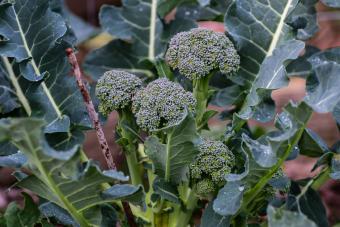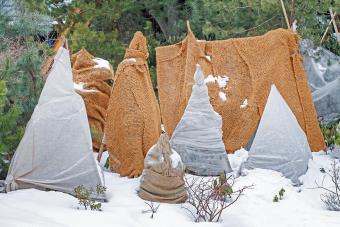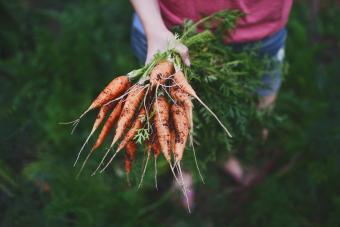
If you're like me, then you like to have fresh veggies as early in the spring and late in the fall as humanly possible. And that's where frost-resistant vegetables come in. These veggies will withstand an early frost in the fall or late frost in the spring.
Keep in mind that frost-resistant is more accurately described as frost tolerant, which means that these veggies will still be fine after a frost, but they may not necessarily withstand a hard freeze. Better yet, in many cases, a light frost will actually improve the flavor of the vegetable.
8 Frost-Resistant Vegetables to Plant
Ready for some late fall or early spring veggies fresh from your garden? These frost-resistant vegetables are some of the most popular as well as the most tolerant to even a hard frost
Broccoli

You can plant broccoli as early as six weeks before the first frost-free date, but it does best as a fall garden crop. Young plants should be hardened off before transplanting into your garden. Broccoli can tolerate temperatures from 26° to 31°F (-3° to 0°C).
Brussels Sprouts

Brussels sprouts do so well in the cold that they are often harvested well into winter. This is one vegetable that improves in flavor when exposed to cold temperatures. Frosts will actually increase the sugar content, effectively eliminating the bitter taste so often experienced in summer sprouts. They can handle temperatures down to about 20°F (-7°C) for short periods.
Cabbage

Cabbage likes cool temperatures as low as 26°F (-3°C), depending on the variety. In fact, you will find they do best in cool fall weather and are rather disappointing in a summer garden. However, if you start them early enough, you can still get a crop before the weather gets too hot. A light frost is thought to improve the sweetness of cabbages. Watch for insects such as cabbage lopers that also like to munch on sweet cabbage plants.
Kale

Kale can withstand temperatures as low as 10°F (-17°C). It's also noted for improved sweetness after frost. A very hardy vegetable, kale not only tolerates the cold, but it has no problems with insects like cabbage can have.
Kohlrabi

Kohlrabi does not like hot summer temperatures at all, but cool weather is rewarded with delicious, sweet bulbs that are wonderful raw or cooked. Transplants can be put out six weeks before frost with an expected harvest in only a few short weeks. Harvest young, about two inches or so in diameter. You can also cook the leaves. Kohlrabi can tolerate moderate freezes down to about 24°F (-4°C).
Peas

Peas are one of the earliest crops to harvest in the spring. They can tolerate light frosts with temperatures from to 31°F (0°C). Plant them from seed four to six weeks before the last expected frost date in your area. Water well and provide something for the vines to climb once they emerge.
Spinach

Spinach does very well in cold weather and can tolerate temperatures as low as 20°F (-7°C). It can also be an early spring crop if you grow it under a row cover or cold frame to protect it from extremes. Late-season seedlings can be mulched heavily for the winter when temperatures reach freezing for a nice spring crop.
Turnips

Turnips are another vegetable that improves in flavor with a frost. They can be planted in very early spring or late into fall in southern climates. The top leaves will die back if temperatures drop below 10°F (-12°C), but the root itself will still be good to eat. As long as the ground is still workable, you can continue to harvest turnip roots.
Frost-Resistant Vegetable Tips
In general, brassica crops are tolerant to frost. This includes broccoli and cabbage, as well as cauliflower and radishes. Lettuce is another vegetable that performs best in cool weather.
Whichever type of vegetables you choose to plant, be sure to look at the directions on the seed packet or plant tag. These directions will guide you so the particular variety you have chosen will do its best.
Just because you have a vegetable that is considered frost tolerant doesn't mean that all varieties of that vegetable can withstand the same temperatures. It is important to note planting times and days to maturity in relation to your frost dates.
Enjoy Early & Late Crops
There's no need to give up on fresh veggies as the ground starts to harden. Frost-tolerant crops will last you well into winter and be ready again in early spring, so they're perfect for planting before the first frost of fall or the last frost of spring.







